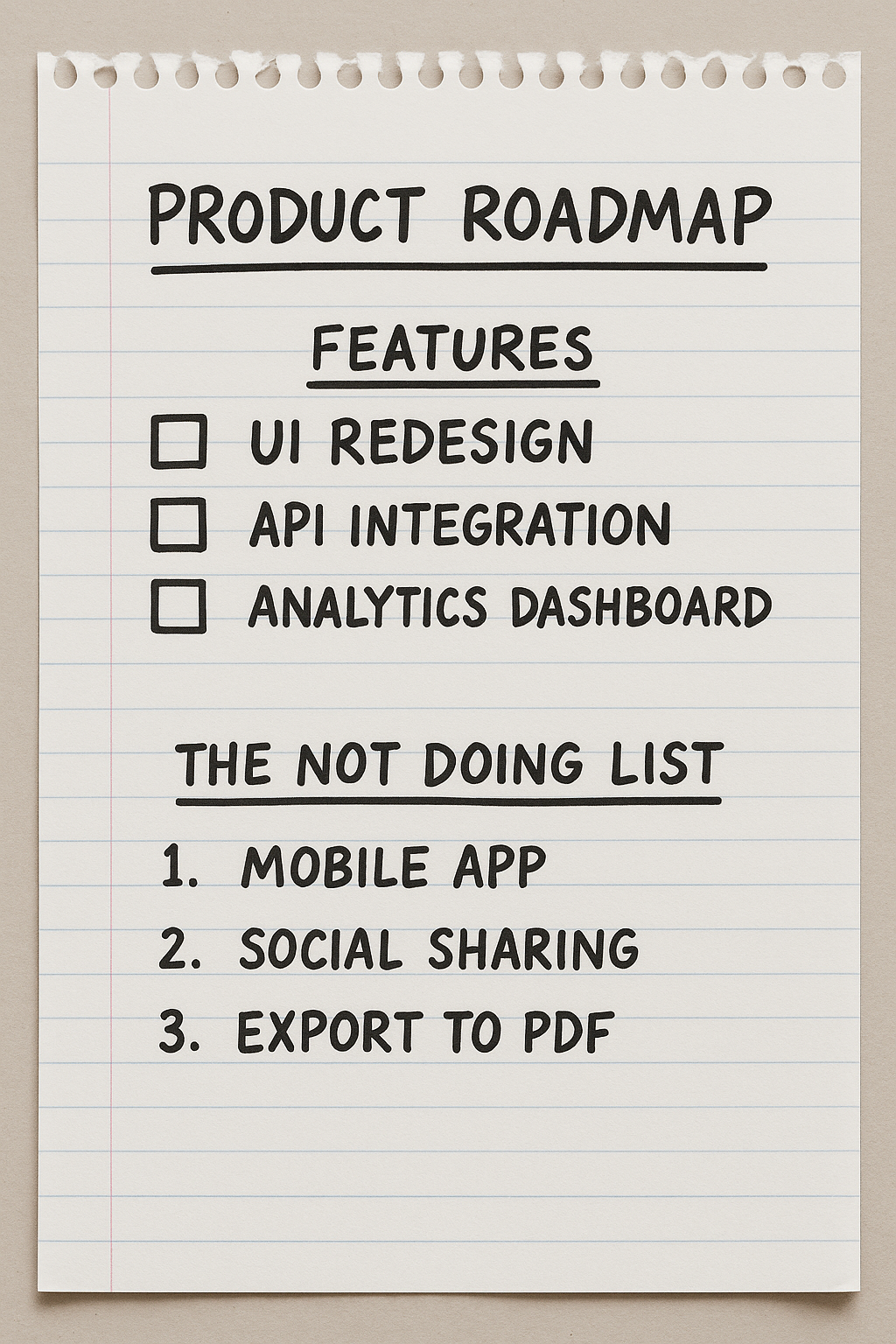I came away with a new insight after a cross-functional review of my team’s strategy and roadmap last week. The most valuable discussion and debate wasn’t focused on what we were doing — they revolved around what we weren’t. Specifically, the items were consciously choosing not to work on.
While I’m a big believer in outcome-based roadmaps, output-based roadmaps have an important place, especially when it comes to sequencing work across cross-functional teams. To help increase the level of clarity and alignment across teams, I added an explicit section to my team’s V2OOO strategy for what we are not doing (ie: “The Not Doing List”).

Why was this so effective? I believe there are three distinct reasons.
1. Dispelling Hidden Assumptions
Here’s the thing: a product roadmap is never meant to capture every single workstream. But when something isn’t listed, there is often a hidden assumption that the items that are not listed must be a “small thing” that’ll get done anyways. By clearly stating what we’re choosing not to do, we eliminate the illusion of hidden work and make trade-offs visible. It encourages further conversations around items missing from the roadmap and “The Not Doing List” to ensure there is clarity of the full scope of work.
2. Not Now vs Not Ever
An item in “The Not Doing List” does not necessarily mean it will never be done. Good strategy requires a clear time horizon — I recommend 6 months to a year. Including something on “The Not Doing List” simply communicates that it’s not planned for this execution window, and not that it’s off the table forever. This list is a ripe conversation starter for projects that may have downstream timeline dependencies and debate projects that can be killed entirely into the “Not Ever” bucket.
3. Holistic Reprioritization
No product roadmap is set in stone, and reprioritization is critical activity which is vastly improved when you have the “full scope of opportunity” in front of you. Having both the planned work, and “The Not Doing List” paired together leads to dramatically more effective conversations. Two specific scenarios that I’ve seen multiple times:
First, imagine there is debate that a project in “The Not Doing List” should be reprioritized into the planned roadmap. No problem! Now, all parties have the context for what is planned, and can make recommendations for trade-offs to move something out of the planned roadmap and into “The Not Doing List”. These are great opportunities for hearing how your stakeholders view the priorities for their teams and customers.
Second, when a new idea emerges, there is a common tendency to prioritize it relative only to the current planned roadmap. “The Not Doing List” gives additional context with the realm of adjacent possibilities which is highly valuable to include in the holistic evaluation of new ideas. Is the new idea higher priority than both the current roadmap and the items that we’ve consciously chosen not to do?
Take-aways
At the end of the day, no product strategy is perfect of course. In my experience, a great product strategy isn’t evaluated if it’s right or wrong. It’s evaluated based on the quality of the conversations that it drives. If you present your strategy and hear crickets…you’ve got work to do. Including “The Not Doing List” is just one more tool in the tool belt to help you drive effective conversations across your teams and organizations. Cheers!